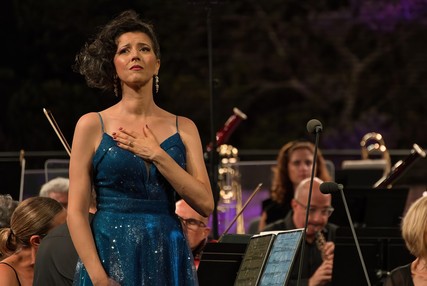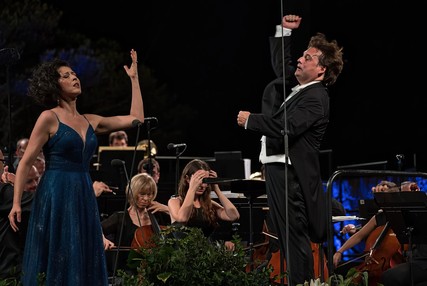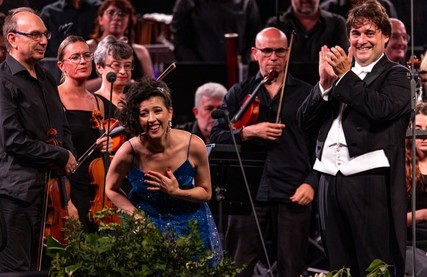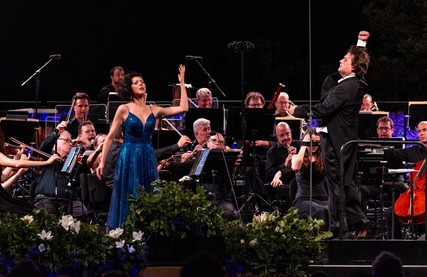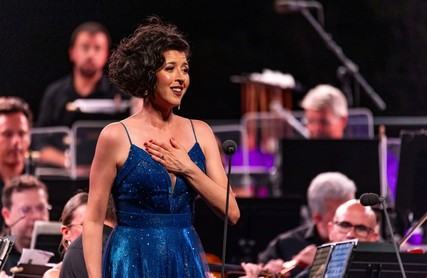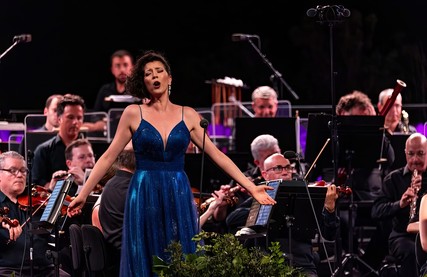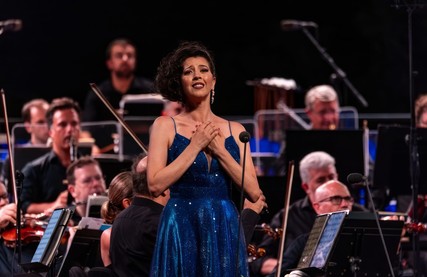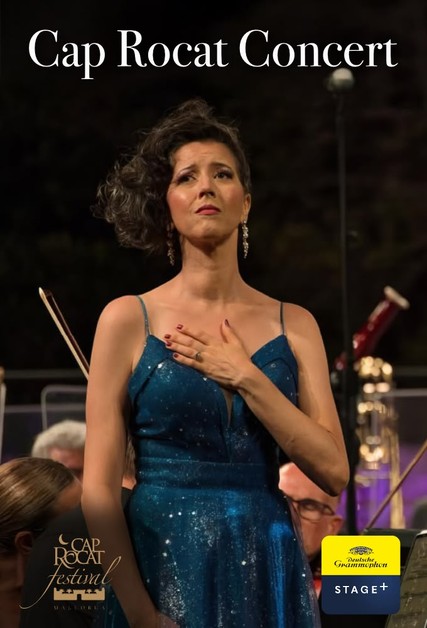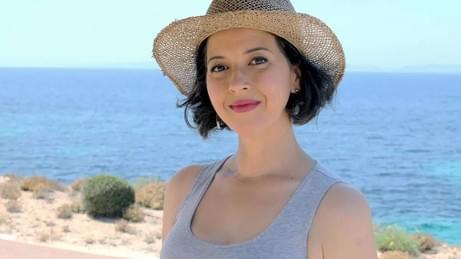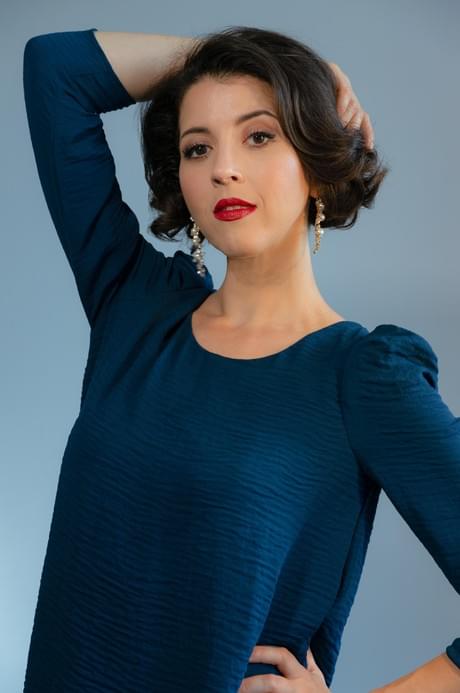Entre todas estas piezas, todas interpretadas a un nivel sinigual que dejó fascinado a un publico totalmente entregado, destacó Oh, nube! Che lieve per l'aria, de la obra de Donizetti Maria Estuarda, que la soprano interpretará por primera vez en su carrera en el Teatro Real la próxima temporada. Valga subrayar los bises con los que Oropesa concluyó una velada redonda. Después de volver sobre sus pasos, la soprano tomó la palabra para compartir una información de la que había sido conocedora días antes. Su bisabuela, nacida en la isla de Mallorca, era el último eslabón en unirse a un largo linaje de mujeres ligadas a tierras hispanoparlantes en la familia de la artista. Con motivo de ese lazo, que continúan la cantante, de origen cubano, y su madre, española de nacimiento, interpreto como colofón final la Romanza de María la O, de la zarzuela del compositor cubano Ernesto Lacuona, Maria la O y, por último, Las carceleras de la zarzuela cómica española Las hijas de Zebedeo.
Among all these pieces, all performed at an unrivaled level that fascinated an utterly devoted audience, one stood out: "Oh, nube! Che lieve per l'aria," from Donizetti's Maria Stuarda, which the soprano will perform for the first time in her career at the Teatro Real next season. It is worth highlighting the encores with which Oropesa concluded a perfect evening. After retracing her steps, the soprano took the floor to share information she had learned days earlier. Her great-grandmother, born on the island of Mallorca, was the latest link in a long lineage of women connected to Spanish-speaking lands in the artist's family. To commemorate this bond, both the singer, of Cuban origin, and her mother, born in Spain, performed as a final flourish the Romanza from Ernesto Lecuona's Cuban zarzuela "Maria la O," and lastly, "Las carceleras" from the Spanish comic zarzuela "Las hijas de Zebedeo."
— Ángel Mora • El Español



